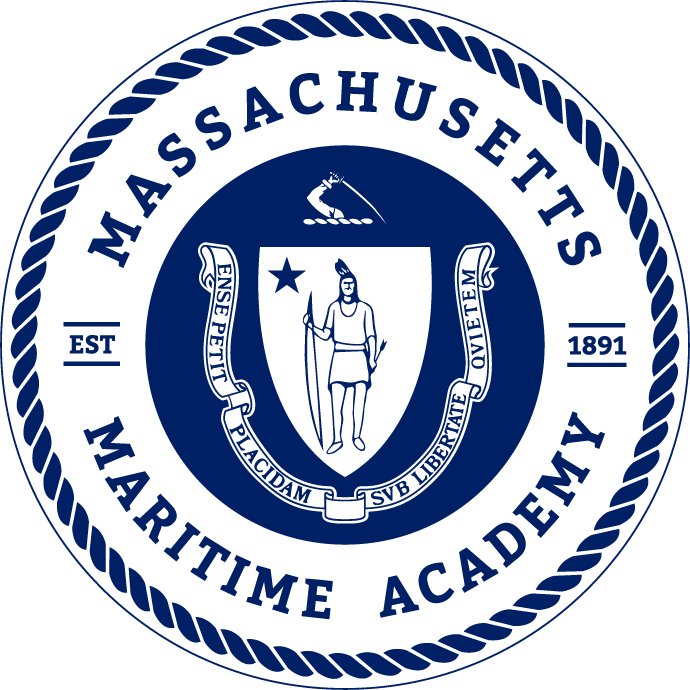Course Description
The students who successfully complete Applied Shiphandling will have gained experience in handling ships real and simulated under conditions and will make a more effective contribution to the bridge team during ship maneuvering. In particular, students will gain: familiarization with the use of engines and helm for ship maneuvering; an understanding of the effects on the behavior of the ship of wind, current, shallow water, banks and narrow channels, and conditions of loading; a greater awareness of the importance of planning a passage or maneuver and the need for an alternative plan; the effective use of information found on the maneuvering diagram; and, effective bridge team management procedures. [Lab time required]
This course consists of one 4 hour lab per week and a comprehensive final examination.
Entrance requirements
As per USCG, Academy and Marine Transportation Department requirements, any student enrolled in this course must have previously successfully satisfied the following prerequisites:
- MT 3222 ARPA (Grade of 70 or better and all ARPA assessments completed)
STCW Objectives
Topics
- In Full Mission Bridge Simulator and on Board TV Ranger
- Navigation
- Terrestrial and Coastal Navigation
- Ability to Determine the Ship’s Position by Use of Landmarks and Aids to navigation
- Dead Reckoning
- Electronic System of Position Fixing and Navigation
- Ability to Determine the Ship’s Position by Use of Electronic Navigational Aids
- Use of RADAR, ARPA, AIS, and ECDIS to Maintain Safety of Navigation
- Echo-Sounders
- Depth, UKC, Shallow Water Alarm
- Ability to Operate and Apply Information Correctly
- Compasses
- Knowledge and Principles of Magnetic and gyrocompasses
- Determine Errors of Magnetic and Gyro Compasses Using Celestial and Terrestrial Means
- Planning a Voyage
- Use of Catalogue of Charts, Ship’s Routing and Sailing Directions
- Symbols and Abbreviations Used on Charts
- Drawing Course Lines When Charts of Different Scales are Used
- Meteorology
- Use and Interpret Information Obtained from Shipboard Meteorological Instruments
- Terrestrial and Coastal Navigation
- Watchkeeping
- ECDIS
- Capability and Limitations of ECDIS
- Danger of Over-Reliance
- Familiarity with Functions
- Safe Monitoring and Adjustment of Information
- Confirmation of Vessel Position by Alternative Means
- Adjustment and Settings and Values to Suit Present Conditions
- Situational Awareness While Using
- RADAR / ARPA
- Fundamentals of RADAR and ARPA
- Factors Affecting Performance and Accuracy
- Detection of Misrepresentation of Information, False Echoes, Sea Return, etc., Beacons and SARTs
- Use for range and bearing, Course and Speed of other Ships, Time and Distance of Closest Approach or Crossing, Meeting Overtaking Ships
- Parallel Indexing
- Methods of Target Acquisition and Their Limitations
- Procedures
- Content of the International Regulations for Preventing Collisions at Sea
- Principles to Observe in Keeping a Navigational Watch
- Use of Information from Navigational Equipment for Maintaining a Safe Navigation Watch
- VTS Procedures
- Bridge Resource Management Procedures
- Prioritization of Resources, Effective Communication, Assertiveness and Leadership, Obtaining and Maintaining Situational Awareness, Consideration of Team Experience
- Use of IMO Standard Marine Communication Phrases and Use of English in Oral Form
- ECDIS
- Maneuvering the Ship
- Effect of Deadweight, Draught, Trim, Speed and Underkeel Clearances on Turning Circles and Stopping Distances
- Effect of Wind and Current on Ship Handling
- Squat, Shallow-Water and Similar Effects
- Restricted Visibility
- Handling a Ship in Rivers, Estuaries and Restricted Waters
- Application of Constant-Rate-of-Turn Techniques
- Interaction Between Passing Ships and Between Own Ship and Nearby Banks
- Berthing and Unberthing Under various Conditions of Wind, Tide and Current with and Without Tugs
- Ship and Tug Interaction
- Use of the Propulsion and Maneuvering Systems
- Management and Handling of Ships in Heavy Weather
- Precautions in Maneuvering when Launching Rescue Boats
- Taking Survivors on Board and Rescuing a Person Overboard
- Ability to Determine the Maneuvering and Propulsion Characteristics of Common Types of Ships
- Importance of Navigating at Reduced Speed to Avoid Damage Caused by Own Ship’s Bow wave and Stern Wave
- Use of and Maneuvering in and near Traffic Separation Schemes and in Vessel Traffic Service Areas
- Controlling the Operation of the Ship
- Steering Control Systems, Operational Procedures and Change Over from Manual to Automatic and Adjustment of Controls for Optimum Performance
- Responding to Emergencies
- Prevention, Control and Fighting of Fires on Board Ship
- Operation of Life-Saving Appliances
- Navigation
Other objectives
- Satisfactorily perform the duties of an Officer in Charge of a Navigational Watch.
- Demonstrate knowledge of principles of ships’ maneuvering characteristics
- Demonstrate ability to perform simple maneuvers and operations with varying vessels
- Demonstrate ability to be a successful member of a Bridge Team
- Demonstrate proper voyage planning principles and techniques.
